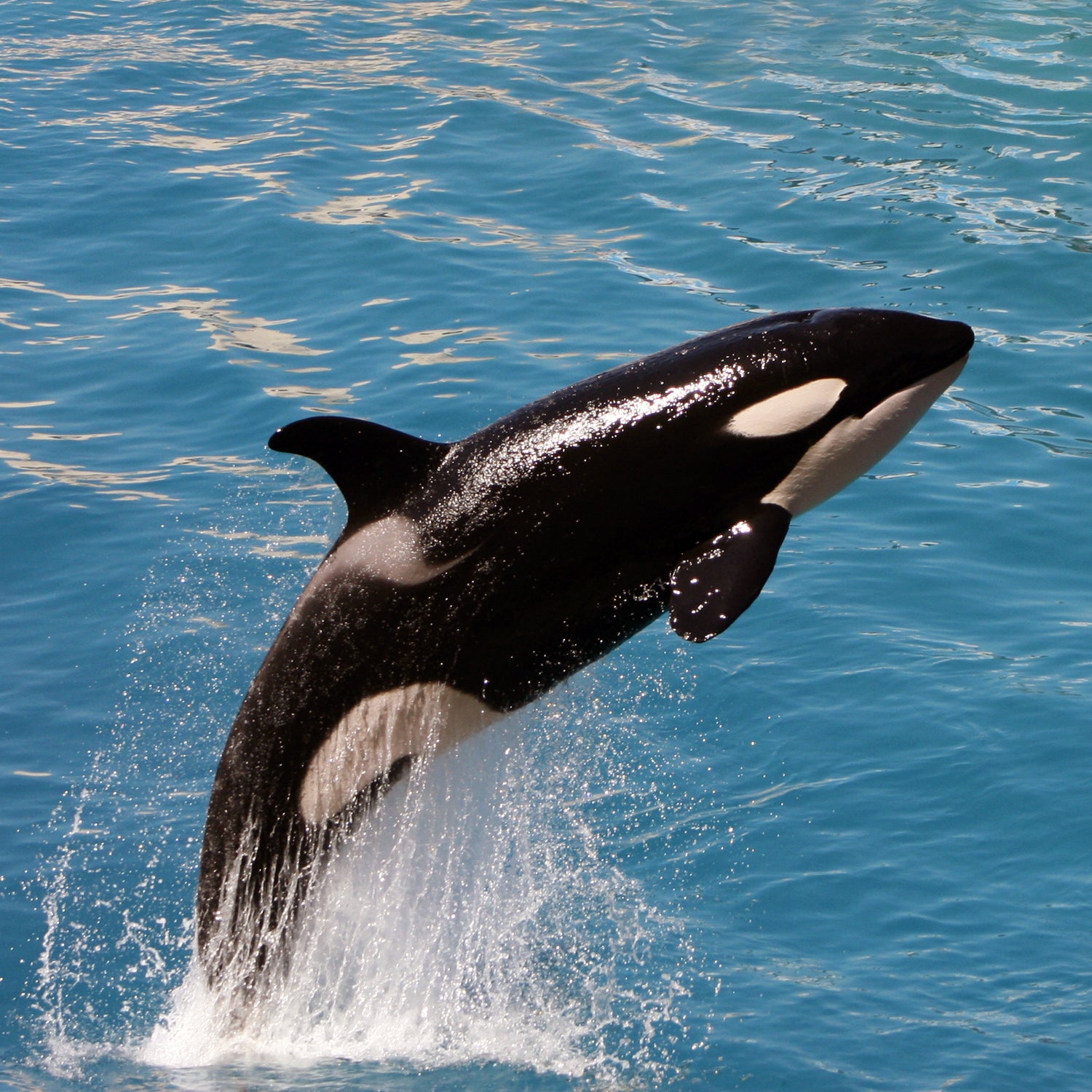Early this morning, in that shocked both its staunchest critics and fans, SeaWorld said that it would bring an immediate end to its killer whale breeding program, and that the 30 killer whales it currently owns at marine parks in Florida, California, and Texas, and at a park in the Canary Islands, would be the last generation of killer whales at SeaWorld. In addition, SeaWorld said it would end its theatrical killer whale shows, double-down on environmental and conservation messaging, and partner with the Humane Society Of the United States to .
SeaWorld’s abrupt change in direction follows years of criticism that keeping killer whales—which are large, highly-intelligent, and socially-complex apex predators—in concrete pools for the purposes of entertainment and profit is unethical and inhumane. That criticism gained worldwide momentum after SeaWorld’s largest killer whale, Tilikum, killed popular SeaWorld trainer Dawn Brancheau in Orlando, in February 2010. Brancheau’s death, and Tilikum’s troubled life in captivity, was at the center of ���ϳԹ���’s “The Killer In The Pool,” which inspired the critically-acclaimed and widely viewed 2013 documentary .
After the release of Blackfish, SeaWorld suffered declines in attendance, revenues, and stock price, and a new CEO, Joel Manby, was brought in last year to try and turn the company’s business model around. To do that, Manby announced today that SeaWorld has to move on from killer whales. “As society's understanding of orcas continues to change, SeaWorld is changing with it. By making this the last generation of orcas in our care and reimagining how guests will encounter these beautiful animals, we are fulfilling our mission of providing visitors to our parks with experiences that matter,” Manby .
Even with an immediate end to captive breeding, SeaWorld could have killer whales in its pools for 30 or more years.
As someone who has been reporting on SeaWorld and the debate about killer whale captivity since writing “The Killer In The Pool,” I’m not surprised that SeaWorld has decided that its killer-whale-centric business model is increasingly anachronistic and unprofitable. Because it is. I am surprised, however, after years of against critics, serial , and with spies, at how quickly Manby has thrown out SeaWorld’s old game plan and is making a decisive break with the marine park’s past. So kudos to Manby for seeing where his business was headed and understanding that it needed reinvention.
But before everyone gets together in a big group hug, let’s pause to consider the realities of how this might play out.
The first and most important point is that even with an immediate end to captive breeding, killer whales are long-lived, and SeaWorld could have some of its younger killer whales in its pools for 30 or more years. (One SeaWorld female, Takara, at SeaWorld Texas, .) That gives SeaWorld decades to make the transition from featuring killer whales to whatever entertainment or educational model it is moving toward. It also means that SeaWorld will continue to keep killer whales in concrete pools for a long time, no matter what their plans are to upgrade pool designs.
SeaWorld no doubt is hoping that today’s announcement will mollify critics, stabilize its business, and bring more visitors to its parks. But the criticism of SeaWorld all along has been that killer whales don’t belong in small tanks, confined to an unnatural and stressful environment. So I’d expect critics to applaud SeaWorld’s announcement and immediately call upon SeaWorld to retire its killer whale collection to natural, sea-based sanctuaries where they will have more space and stimulation.
Of SeaWorld’s current 29 killer whales, six were born in the wild (five of those six have lived in captivity for more than 30 years), and 23 were born in captivity. In a , SeaWorld CEO Manby pre-empts any calls that they be set free, writing “If we release them into the ocean, they will likely die.” Sanctuaries could be a viable option, however building and maintaining sea-based sanctuaries for killer whales would be a complex and expensive undertaking. From a hard-nosed business standpoint, sanctuaries, where it’s harder to see the animals, don’t seem very attractive. SeaWorld says that its killer whales will remain at its marine parks and won’t be sold abroad to unrelated parks in Asia, Russia, and the Middle East, where public opinion is more amenable to killer whale entertainment. That leaves SeaWorld with two costly choices: weathering ongoing criticism for keeping killer whales in its existing pools or investing in developing sea-based sanctuaries.
The last big question I am left with is: having announced that this will be the last generation of killer whales at SeaWorld, what changes might SeaWorld be pressured to make to its treatment and use of dolphins? Killer whales, after all, are simply the largest species of dolphin. If it isn’t right or good business to keep them in concrete pools, breed them, and put them in shows, how will it be possible for SeaWorld to justify continuing to do all those things with its dozens of bottlenose dolphins? And what about its beluga and pilot whales? And its sea lions? Captivity is not very kind to those intelligent marine mammal species either. Setting killer whales apart and drawing the line there might not be so easy.
For now, however, it is enough to say that these are good questions to have, and that they flow directly from SeaWorld’s surprising and welcome decision to declare openly that it is moving toward a future without captive killer whales. How this will play out and what it might mean for all marine mammals in captivity will be the next chapter. But credit SeaWorld and the millions of grassroots activists who pushed for change for turning the page today.


